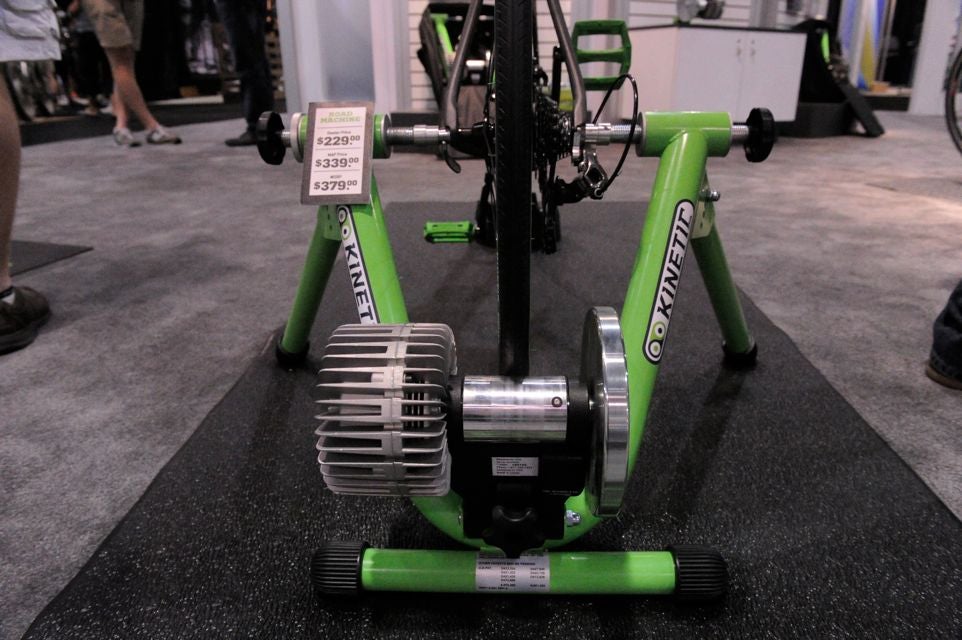Interbike 2012: The $229 Power System From Kinetic

Photo: Aaron Hersh
Kinetic inRide closely estimates power on a trainer for a pittance.
Triathletes and road cyclists alike have been begging for a more affordable power meter since pro athletes started winning races on the expensive versions, and a few budget-friendly options are finally available. One of them is the Kinetic inRide system, designed to turn a Kinetic indoor trainer into a close estimation of a power meter for a fraction of the cost.
Full-fledged power meters use strain gauges to measure the torque produced by the rider and this unit does not. Instead of directly measuring torque and cadence, Kinetic’s trainer-mounted power meter counts the resistance roller’s RPMs and correlates this to data taken using Power Tap hubs relating roller speed to the power required to spin the unit. InRide is a power estimator more so than a straight-up power meter because it relies on prior data about the resistance unit and does not measure the power directly created by the rider. This is the concession for having a meter that costs less than many cycling shoes.
Resistance goes up as roller RPMs increase, but tire selection, tube composition, air pressure and force between the roller and tire also impact the resistance created by Kinetic’s resistance unit. Simply counting revs isn’t enough to give a reliable estimation of rider power. Kinetic says the power increases at nearly the same rate as revolutions go up regardless of the other variables; those other factors impact the starting point of this curve and can be accounted for by a quick spin-down calibration before each workout. While the data may be offset from strain gauge-based power meters, Kinetic says the data produced by inRide is repeatable and any error will be duplicated from ride to ride, keeping training data consistent. And consistency is more important than accuracy.
When some fluid trainers heat up, the resistance fluid becomes less viscous and creates less resistance per revolution. InRide’s method of power estimation only works because the resistance generated with a revolution of Kinetic’s fluid unit does not drift as the system heats up. The silicone’s viscosity does not change as it heats and, since their design lacks an impeller to stir the fluid, it isn’t subjected to a huge increase in temperature, says Kinetic.
Mounting inRide is extremely simple. Kinetic’s roller drum conveniently already has a hole in which a magnet can be mounted. A sensor is attached to the resistance unit that uses the magnet to count revolutions. This information is transmitted via Bluetooth to an iPhone running Kinetic’s free app. Utilizing Bluetooth rather than ANT+, the transmission standard used by most cycling computers, allows the data to be transmitted to the app more times per second says the maker. Kinetic says this is critical to their system, but it means that only iPhone users (Android coming later) can use inRide. And they need an iPhone case and bike mount.
Older versions of the Kinetic Road Machine can be retrofitted with inRide.
Kinetic’s app has many display options for power, time, heart rate and more advanced training metrics like Training Stress Score, power profile numbers and time spent in training zones all adopted from the book Training and Racing with a Power Meter by Coggan and Allen (Velopress).
What is the value to a power system tied to a trainer? It allows cyclists to see immediate feedback about changes to their effort just like a standard road power meter. It creates a repeatable effort standard to follow during interval or threshold workouts. These are two humongous training benefits and, at $229, inRide has the potential to bring power training to many more triathletes not willing to shell out for a bike-mounted power meter.